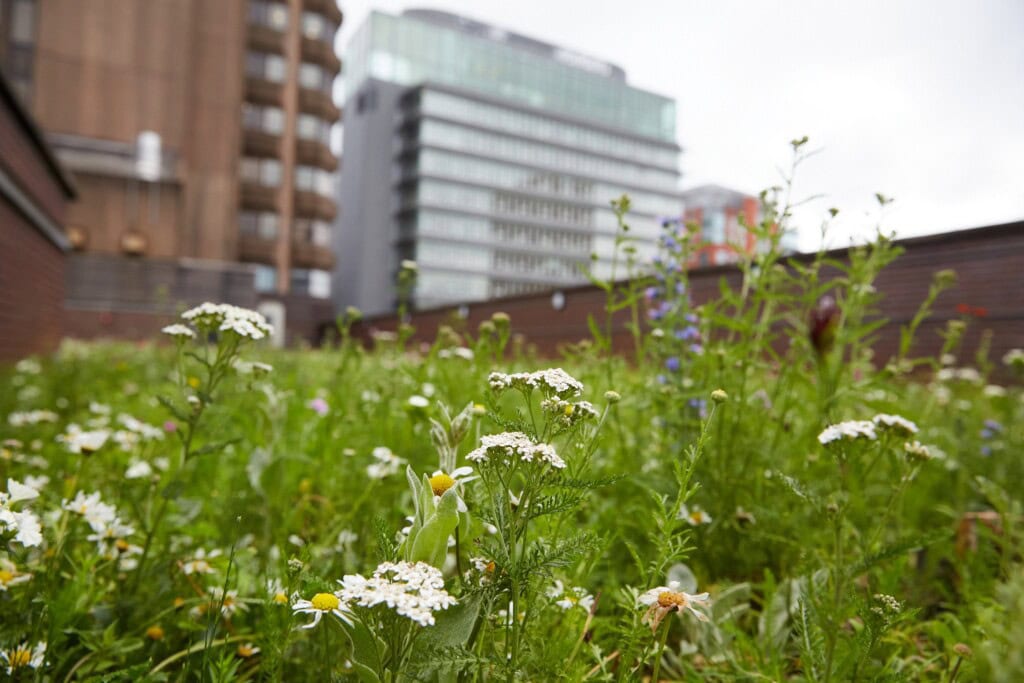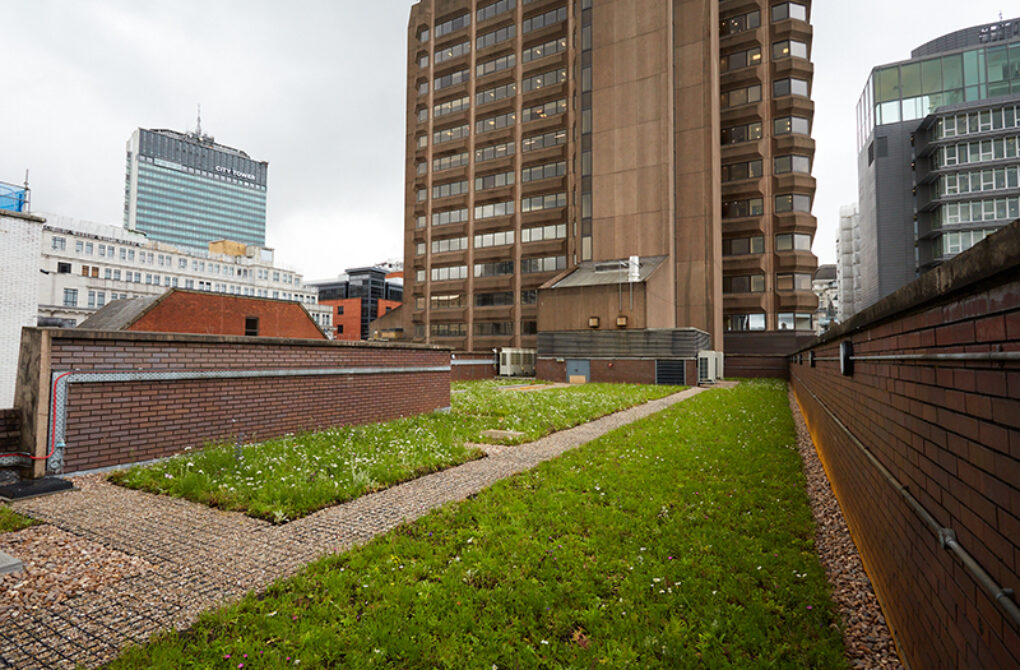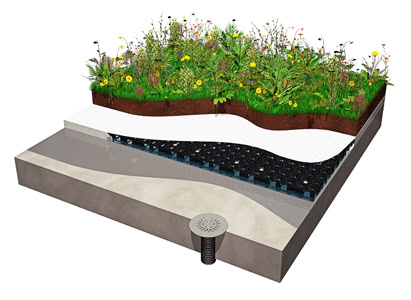Smart Blue-Green Roof

Problem Addressed
This solution was sourced in response to UKGBC’s Innovation Challenge: “How can existing buildings be made more resilient to climate change, with as little disruption to their occupants as possible, by 2030?”
The ‘smart’ blue-green roof from Polypipe Civils & Green Urbanisation (applied to Bruntwood Works’ Bloc) is addressing the need to develop greater understanding of how new construction and data technologies can help cities and urban developments to mitigate the impact of climate change and population growth, while enhancing biodiversity.
Verification & Case Study
The roof system is currently part of a research project being monitored and reviewed by Salford University. The roof’s effectiveness is verified in a variety of ways:
Managing rainfall as a resource: United Utilities verify the benefits of the roof intercepting and re-using rainfall, to consider how this can impact the drainage system during points of heavy rainfall and to record how much has been used as a resource by the blue-green infrastructure.
Impact on biodiversity: By introducing integrated natural habitats across the urban landscape, this not only creates healthier, more resilient communities that are highly carbon and energy efficient, but also improves the mix of flora and fauna found in the city centre.
Climate resilience: The roof creates additional space to store excess rainfall in the face of increasingly frequent large storm events due to climate change. The water is then stored and reused for passive irrigation delivering a resilient asset that continues to thrive in periods of drought.
The technology installed on the roof is scalable and could be connected to multiple roof spaces and attenuation tanks to offer a catchment-wide solution where water is gradually released into the natural watercourse to make space for large storm events and reduce the risk of flooding. Harvested rainwater can be used for a wide range of non-potable applications across both commercial and residential projects. Reducing potable (mains) water consumption in toilets, laundries and cooling systems, protects drinking water supplies during extended dry spells and can lower overall utility bills.
The project and outcomes will be monitored and reviewed by Salford University across a two year period. Upon completion of the two-year roof programme, the roof will demonstrate:
- The impact of such a system on surface water runoff.
- The impact of increased green infrastructure cover in the area.
- The viability of such a structure in the development process (new build and retrofit).



This page presents data, evidence, and solutions that are provided by our partners and members and should therefore not be attributed to UKGBC. While we showcase these solutions for inspiration, to build consensus, and create momentum for climate action, UKGBC does not offer commercial endorsement of individual solutions. If you would like to quote something from this page, or more information, please contact our Communications team at media@ukgbc.org.
Related members
Related
Green roofs for people and nature

Platform for leak detections and water analytics

Planters enhancing biodiversity

Design tool to calculate the natural capital impacts and biodiversity of trees


